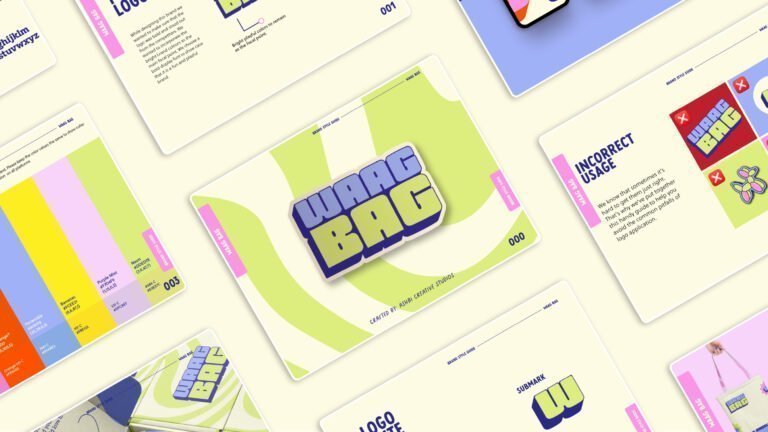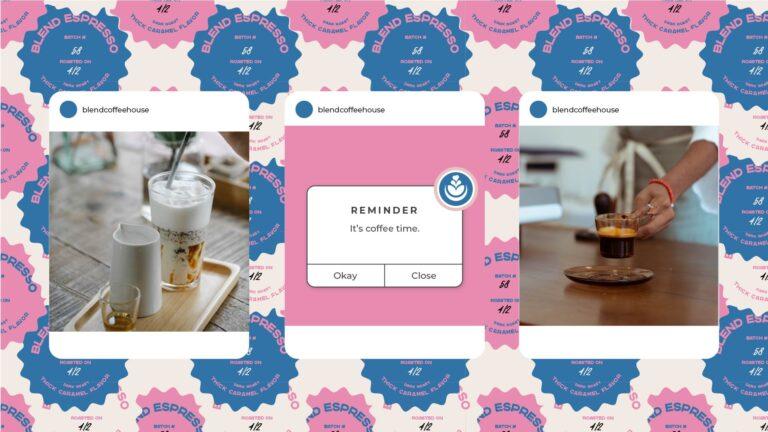Branding design is the visual embodiment of a brand’s identity. It encompasses a range of elements such as logos, colors, typography, and imagery, all meticulously crafted to create a cohesive and memorable brand experience. Understanding the fundamentals of branding design is crucial for businesses looking to establish a strong market presence and foster customer loyalty.
What is Branding?
Branding is the process of creating a distinct identity for a product, service, or company through visual and verbal elements. Historically, branding began with simple marks and symbols used by artisans to identify their work. Over time, it has evolved into a sophisticated practice that involves a strategic approach to shape perceptions and build an emotional connection with the audience.
Core Components of Branding
- Logo Design: The logo is the face of the brand, a unique symbol that represents the brand’s essence.
- Color Scheme: Colors evoke emotions and can influence consumer behavior. The right color palette is essential for brand recognition.
- Typography: The choice of fonts reflects the brand’s personality and tone.
- Imagery: Visual elements like photos and graphics should align with the brand’s identity and message.
- Tagline: A concise, memorable phrase that communicates the brand’s promise and values.
Importance of Branding
Branding is vital for several reasons:
- Brand Recognition: A strong brand is easily recognizable and stands out in the market.
- Trust and Credibility: Consistent branding builds trust and credibility with consumers.
- Customer Loyalty: Effective branding fosters loyalty and encourages repeat business.
- Competitive Advantage: A distinct brand identity gives a competitive edge in a crowded market.
The Psychology of Branding
Understanding the psychology behind branding can enhance its effectiveness:
- Color Psychology: Different colors evoke different emotions. For example, blue often signifies trust, while red can evoke excitement.
- Font Psychology: Fonts convey tone and personality. Serif fonts are often seen as traditional, while sans-serif fonts appear modern.
- Brand Personality: Defining a brand’s personality helps in creating a relatable and engaging brand.
- Emotional Branding: Connecting with consumers on an emotional level can lead to stronger brand loyalty.
Brand Identity vs. Brand Image
- Brand Identity: This is how the brand wants to be perceived, including its visual and verbal elements.
- Brand Image: This is the actual perception of the brand by the consumers.
Steps to Create a Brand Identity
- Research: Understand the market, competitors, and target audience.
- Strategy: Develop a clear brand strategy, including vision, mission, and values.
- Design: Create visual elements like logos, color schemes, and typography.
- Implementation: Apply the brand design across all platforms and materials.
- Evaluation: Continuously assess and refine the brand identity based on feedback and performance metrics.
Understanding Your Target Audience
Knowing your audience is crucial for effective branding:
- Market Research: Gather data on market trends and consumer preferences.
- Buyer Personas: Create detailed profiles of your ideal customers.
- Audience Segmentation: Divide your audience into segments to tailor your branding efforts.
Brand Strategy Development
A robust brand strategy includes:
- Vision and Mission Statements: Define the long-term goals and purpose of the brand.
- Brand Values: Identify the core values that guide the brand’s actions and decisions.
- Brand Positioning: Establish the brand’s unique position in the market.
Creating a Brand Story
A compelling brand story can differentiate your brand:
- Narrative Development: Craft a story that resonates with your audience.
- Storytelling Techniques: Use techniques like character development and plot to make your story engaging.
- Case Studies: Analyze successful brand stories for inspiration.
Visual Elements of Branding
Key visual elements include:
- Logo Design Principles: Ensure your logo is simple, memorable, and versatile.
- Color Theory: Choose colors that reflect your brand’s personality and appeal to your audience.
- Typography Choices: Select fonts that align with your brand’s tone and style.
- Consistent Imagery: Use images that consistently convey your brand message.
Brand Voice and Messaging
Creating a consistent brand voice is essential:
- Tone of Voice: Define the tone that reflects your brand’s personality.
- Messaging Consistency: Ensure all communications align with your brand voice.
- Copywriting Tips: Write clear, concise, and engaging content.
Consistency in Branding
Maintaining consistency is key to a strong brand:
- Brand Guidelines: Develop guidelines for using brand elements correctly.
- Style Guides: Create detailed style guides for different platforms and materials.
- Cross-Channel Consistency: Ensure consistency across all channels, including digital and print.
Rebranding
Rebranding can revitalize a brand:
- When to Rebrand: Identify signs that it’s time for a rebrand, such as outdated visuals or changes in the market.
- Rebranding Process: Follow a structured process to rebrand effectively.
- Case Studies: Learn from successful rebranding efforts.
Digital Branding
In today’s digital age, online presence is crucial:
- Online Presence: Build a strong online presence through a well-designed website and active social media profiles.
- Social Media Branding: Use social media to enhance brand visibility and engagement.
- Digital Assets: Create digital assets like videos, infographics, and eBooks that reflect your brand.
Brand Experience
Creating a positive brand experience involves:
- Customer Experience: Ensure every interaction with the brand is positive.
- User Experience: Design user-friendly products and interfaces.
- Packaging Design: Create packaging that stands out and reflects your brand.
Brand Activation
Effective brand activation includes:
- Marketing Campaigns: Develop campaigns that increase brand awareness and engagement.
- Events: Host events that allow consumers to experience your brand firsthand.
- Guerrilla Marketing: Use unconventional methods to attract attention and create buzz.
Measuring Brand Success
To measure the success of your branding efforts:
- Brand Equity: Assess the value of your brand in the market.
- Brand Loyalty Metrics: Track customer loyalty through repeat purchases and referrals.
- Customer Feedback: Gather feedback to understand how consumers perceive your brand.
Branding in Different Industries
Branding strategies vary by industry:
- Corporate Branding: Focus on building a strong corporate identity.
- Personal Branding: Develop a personal brand that highlights individual strengths and expertise.
- Product Branding: Create distinct identities for different products.
- Service Branding: Emphasize the quality and reliability of services.
Legal Aspects of Branding
Protecting your brand legally involves:
- Trademarking: Register trademarks to protect your brand elements.
- Copyright: Secure copyrights for original content and designs.
- Intellectual Property: Understand the legal aspects of intellectual property to safeguard your brand.
Common Branding Mistakes
Avoid these common branding mistakes:
- Inconsistency: Ensure all brand elements are used consistently.
- Poor Research: Conduct thorough research to inform your branding strategy.
- Ignoring Customer Feedback: Listen to customer feedback and make necessary adjustments.
Future Trends in Branding
Stay ahead with these branding trends:
- Sustainability: Embrace eco-friendly practices in your branding.
- Personalization: Tailor your branding to individual consumer preferences.
- Digital Innovations: Leverage new technologies to enhance your branding efforts.
Case Studies of Successful Brands
Learn from the success of these brands:
- Apple: Innovative design and consistent branding.
- Nike: Powerful brand storytelling and emotional branding.
- Coca-Cola: Iconic visuals and memorable advertising campaigns.
- Local Successful Brands: Analyze successful branding strategies of local businesses.
FAQs about Branding Design
What is the difference between brand identity and brand image?
Brand identity is how a brand wants to be perceived, while brand image is how it is actually perceived by consumers.
Why is consistency important in branding?
Consistency ensures that all brand elements align, creating a cohesive and recognizable brand.
How can I measure the success of my branding efforts?
Measure success through brand equity, customer loyalty metrics, and customer feedback.
What are the key elements of a strong brand identity?
Key elements include a unique logo, consistent color scheme, appropriate typography, and relevant imagery.
When should a business consider rebranding?
Consider rebranding if the brand visuals are outdated, there has been a significant change in the market, or if the current brand no longer resonates with the target audience.
How does digital branding differ from traditional branding?
Digital branding focuses on building an online presence through websites, social media, and digital assets, while traditional branding often involves physical elements like print materials and in-store displays.
Conclusion
Branding design is a critical aspect of establishing and maintaining a successful brand. By understanding and implementing the fundamentals of branding design, businesses can create a strong, cohesive brand identity that resonates with their audience and stands out in the market.









